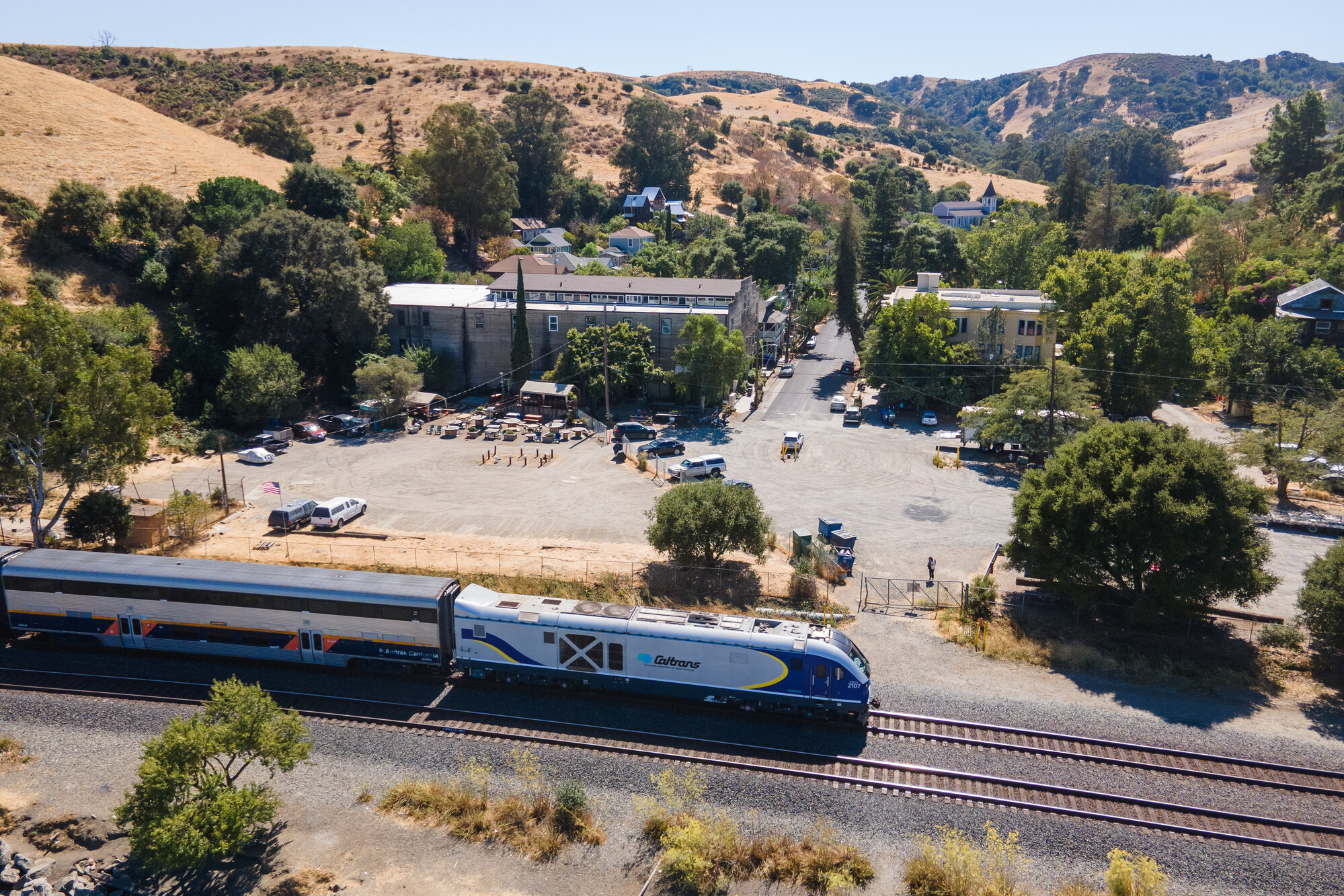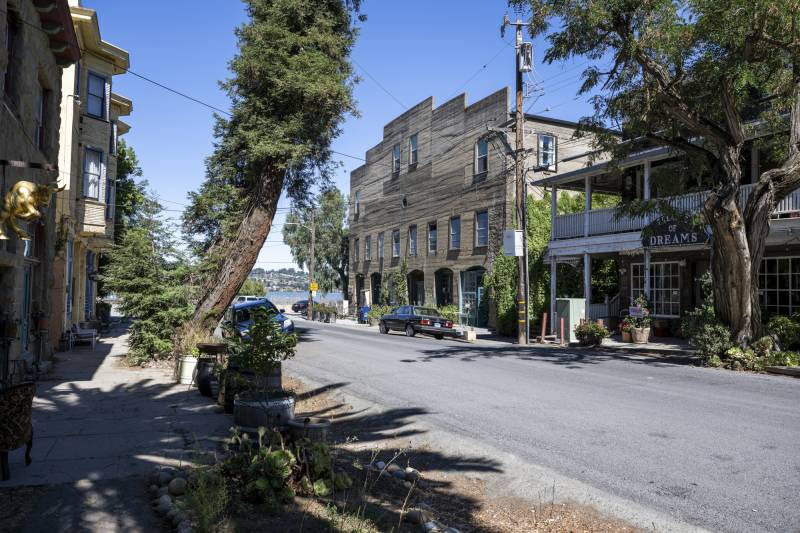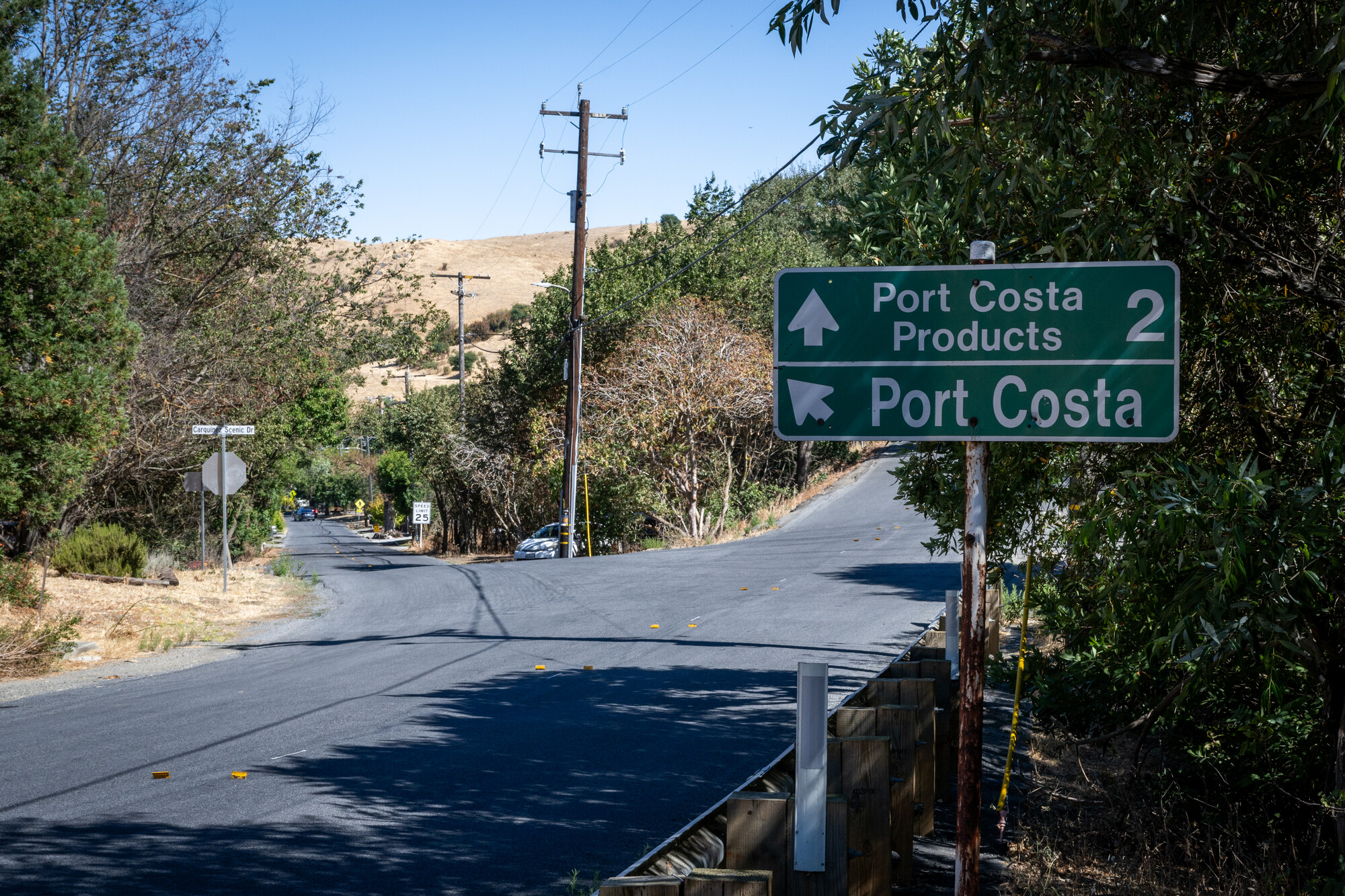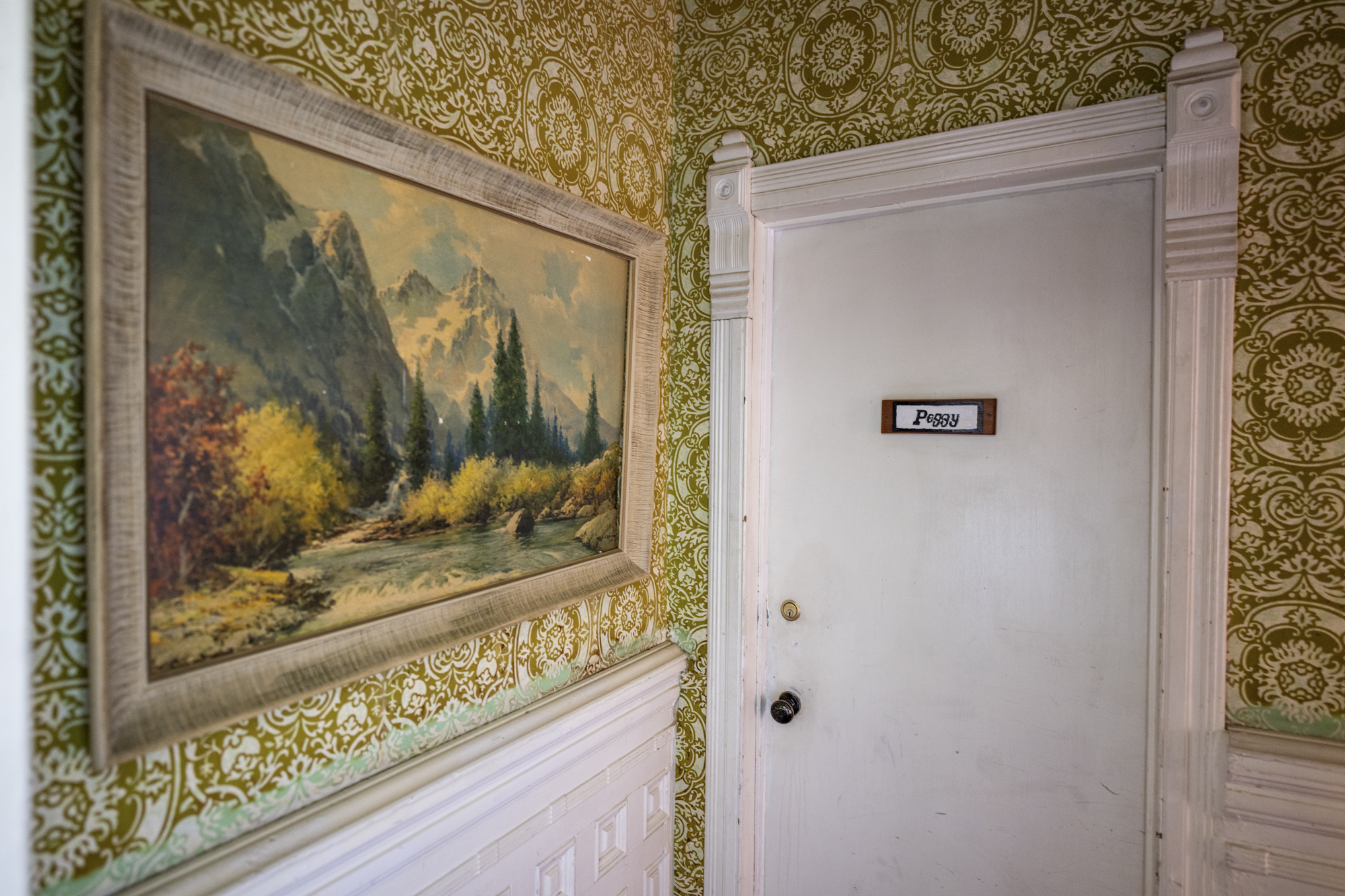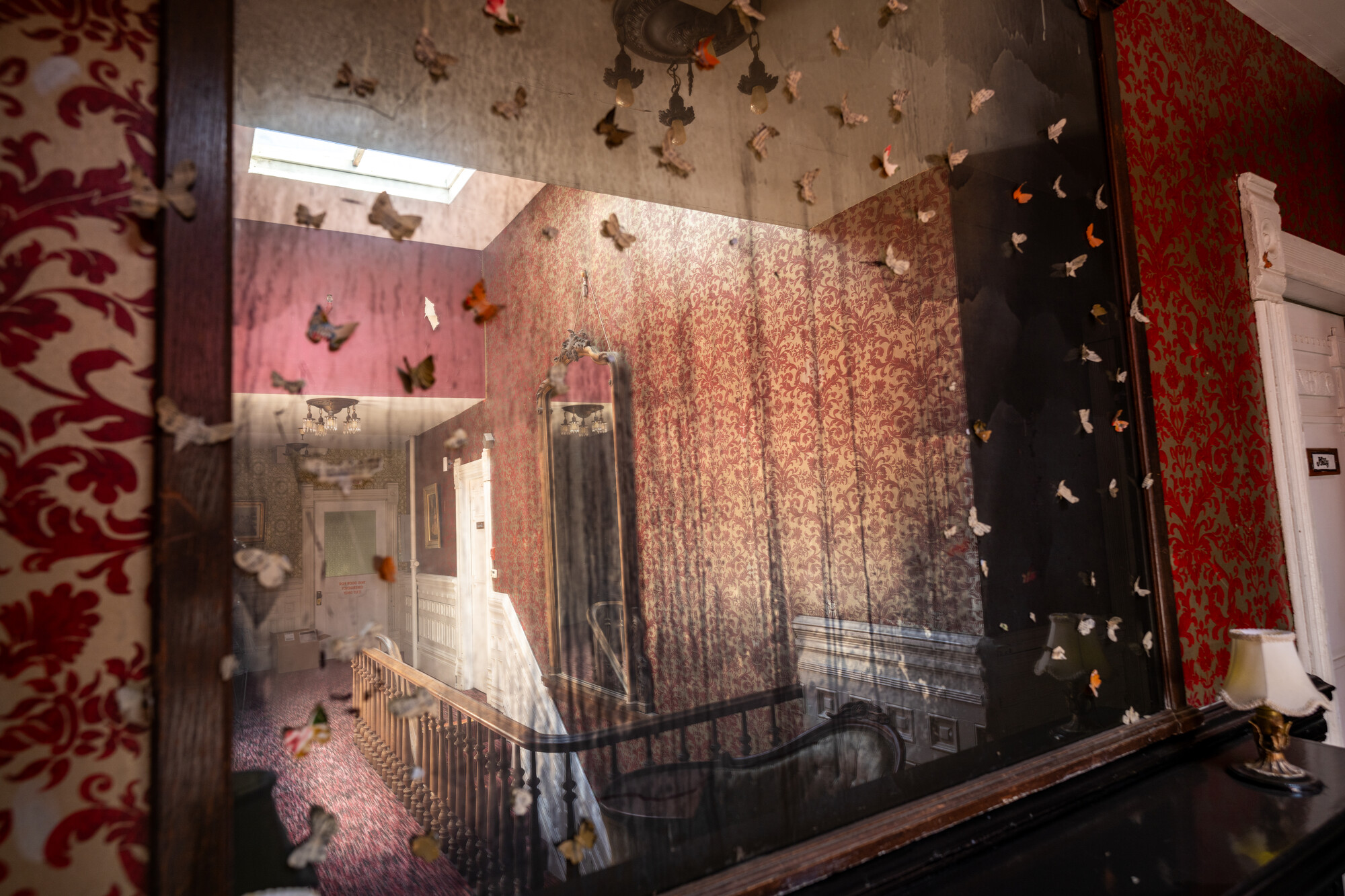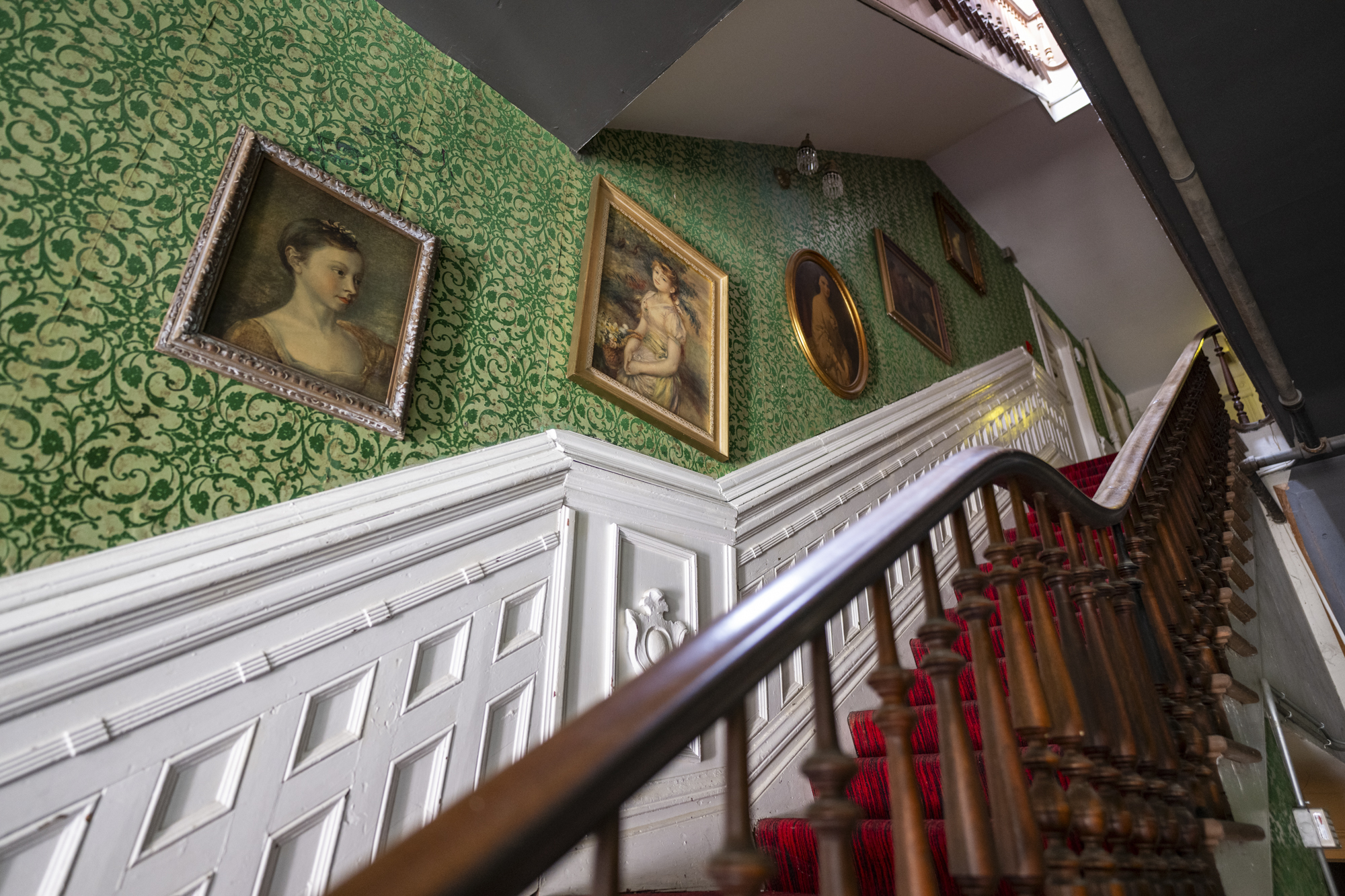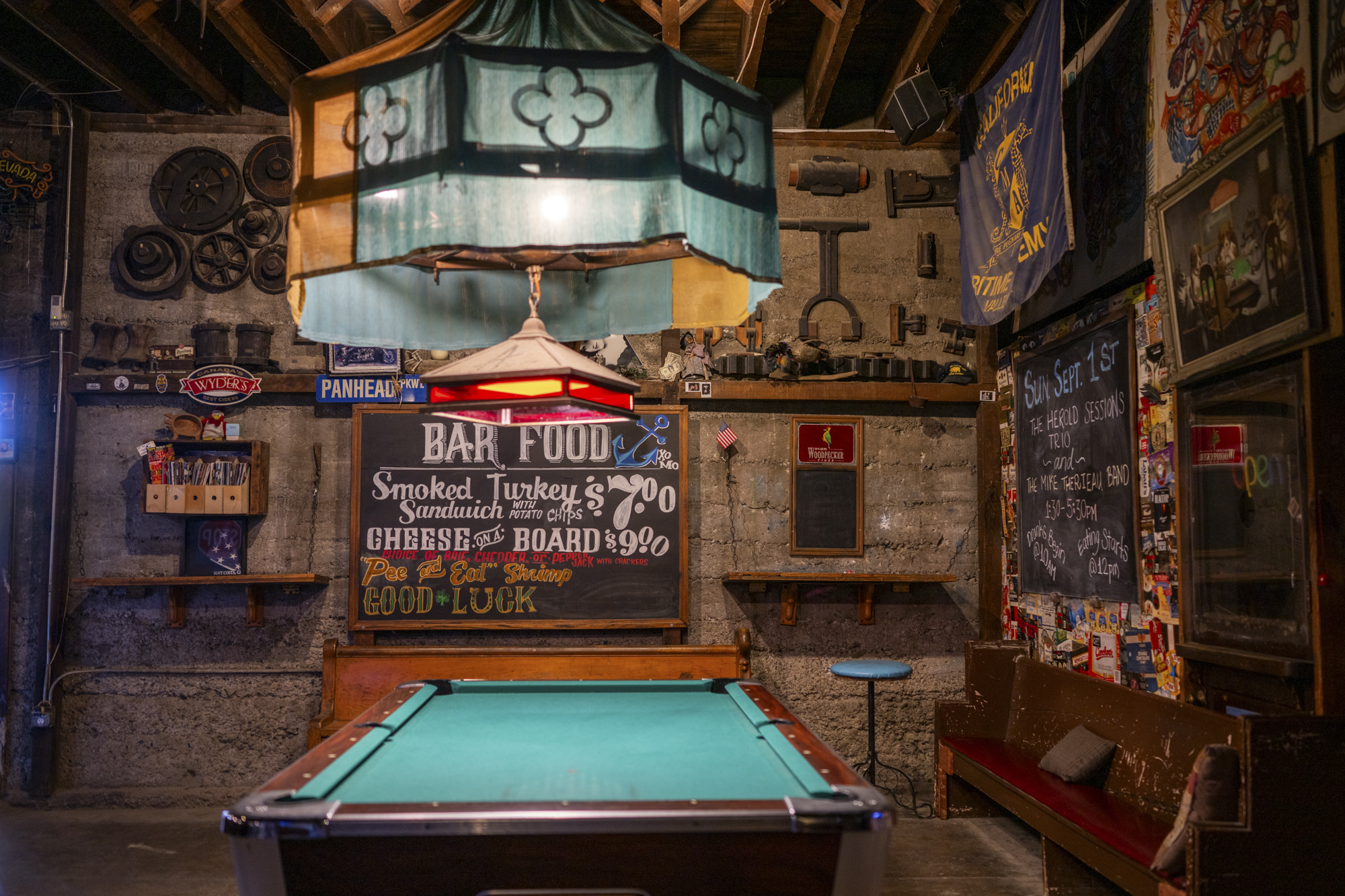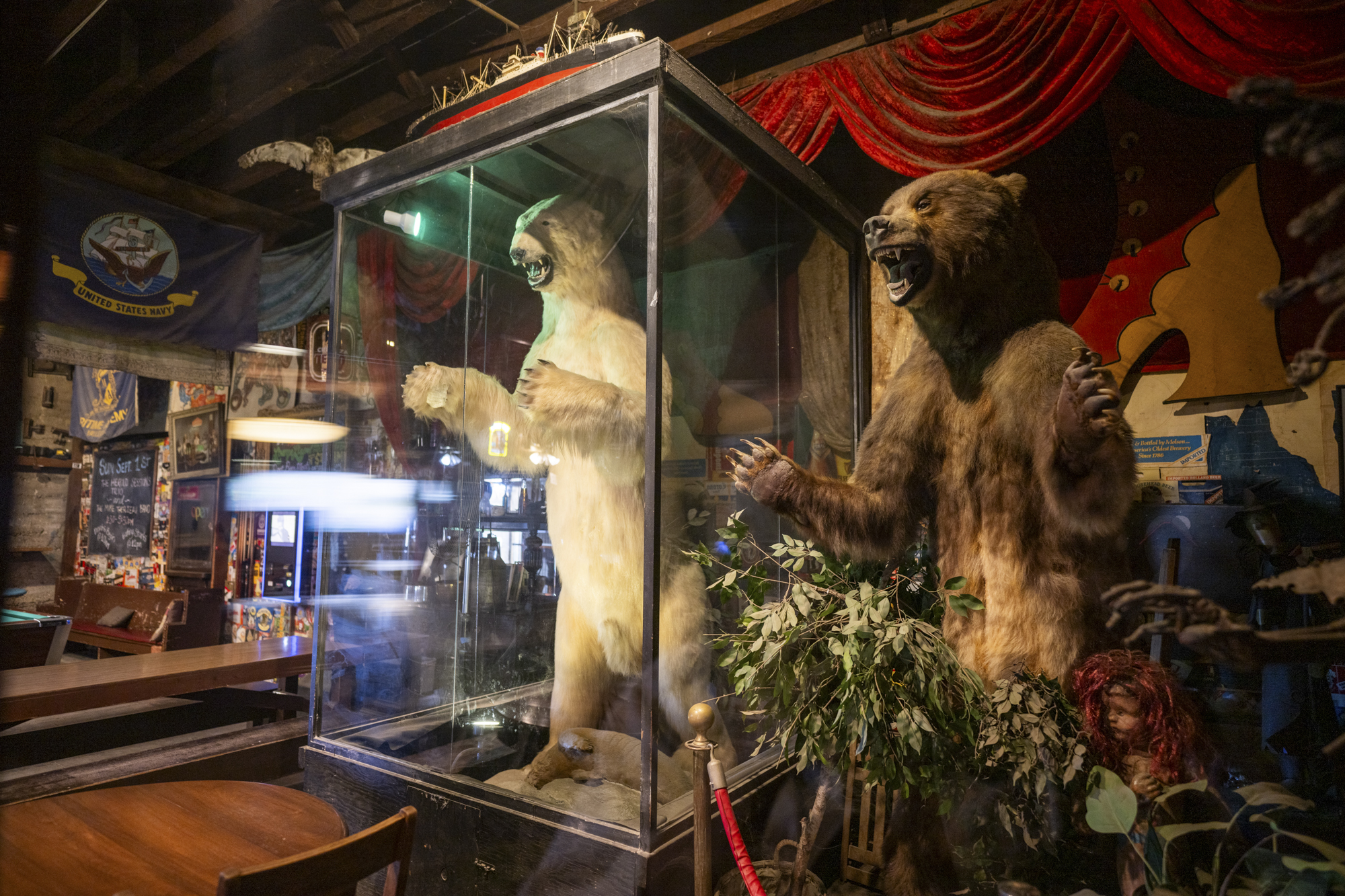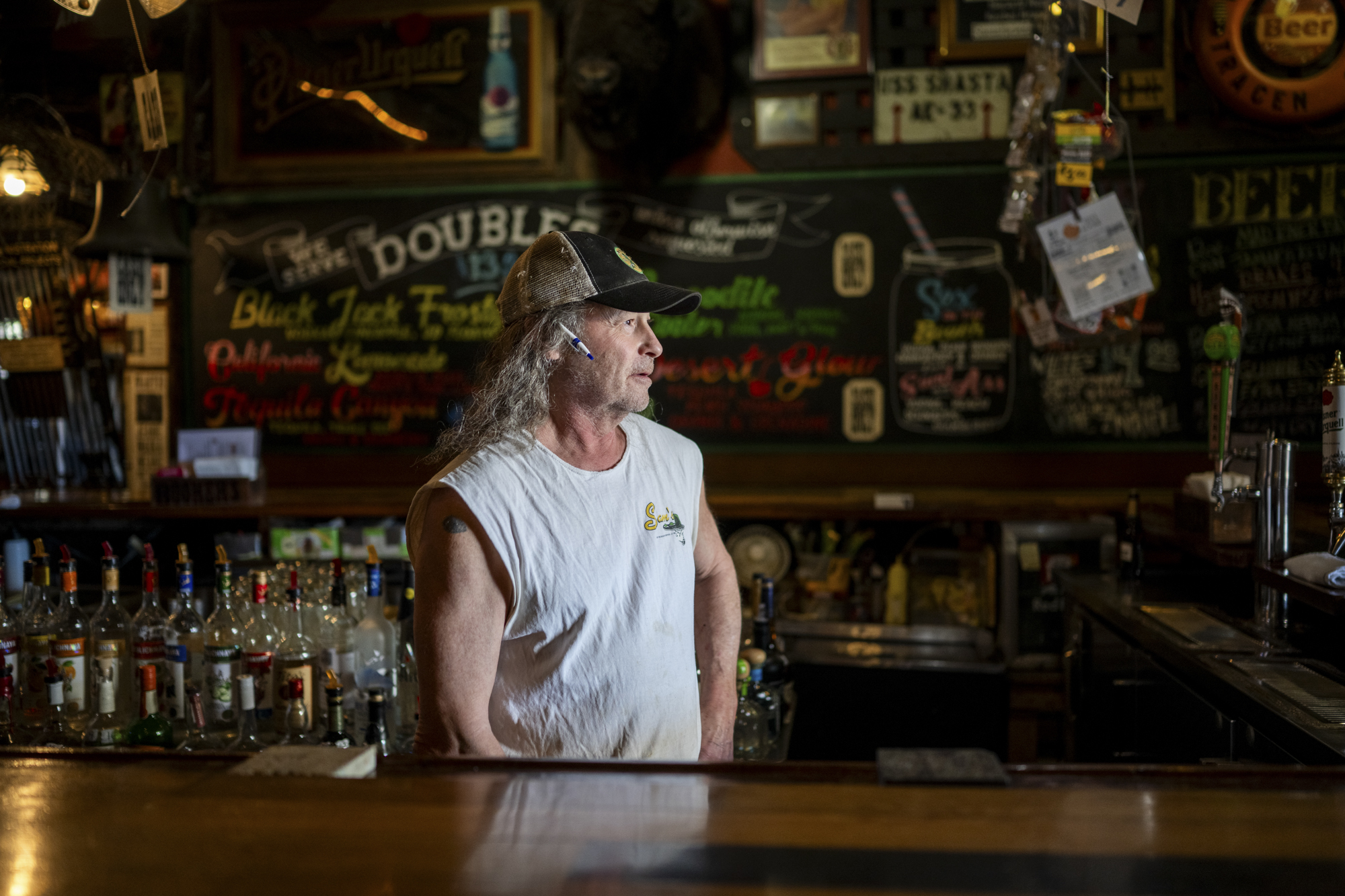Episode Transcript
Olivia Allen-Price: Marianne Hockenberry has vivid memories of being a teenager and going on long bike rides with her mom. They’d often start in Crockett, ride along the Carquinez Strait to Martinez. And sometimes continue on all the way to Danville, some 25 miles away.
Marianne Hockenberry: And then my dad would follow us in, in the VA, in the VW bus. So we had a camper bus, and he biked sometimes, but he wasn’t into it like my mom was. And so yeah, then he would follow along. And so when we got tired, we could just like take a break and get in the bus in the VW.
Olivia Allen-Price: Along these journeys — Marianne and her mom passed through some of the rural, golden hills of the Bay Area. And the towns nestled in them.
Marianne Hockenberry: She liked to tell me stories about Port Costa when we would go through there. We’d be eating at the warehouse…
Olivia Allen-Price: The Warehouse … an iconic building in the small town of Port Costa, and just across the street is an old Victorian hotel. It’s weather-worn but still charming with its chipped yellow and blue paint…
Marianne Hockenberry: … and, she would tell me this used to be, a brothel or used to be women of the night here like she would say, you know.
Olivia Allen-Price: Marianne isn’t totally sure about the truth behind her mom’s stories.
Marianne Hockenberry: My mom was… she was a wonderful kind of crazy woman. And, you know, I don’t know, I, I pretty much take after her, I think. (laughs)
Olivia Allen-Price: Marianne isn’t the only person curious about Port Costa. We’ve received a few questions over the years about this tiny, eclectic town sitting along the Carquinez Strait. Today, we’ll answer a slew of them! Did that old hotel used to be a brothel? Is it haunted? Was Port Costa once a port, as the name suggests?
Olivia Allen-Price: That’s all just ahead on Bay Curious. The show that explores the hidden true stories of the San Francisco Bay Area. I’m Olivia Allen-Price. Stay with us.
Sponsor message
Olivia Allen-Price: To answer the questions from Marianne and other listeners about Port Costa, we first have to get there! KQED’s Katherine Monahan got the job.
Katherine Monahan: If you drive to Port Costa, it’s pretty hard to understand why it’s here. It’s way out at the end of a windy road. You won’t see anything along the way except oak trees and maybe a squirrel or some crows. It seems totally disconnected from the rest of the world. But if you could come by ship or by train — it would all make sense. So we’re going to cross the tracks, look to the left, look to the right. No trains. Let’s go.
Katherine Monahan: Suzanne Statler with the Port Costa Conservation Society steps across the railroad tracks that run along the shoreline at the edge of town. She points out into the waters of the Carquinez Strait.
Suzanne Statler: If you go just out, 50 feet. It drops down to 50 feet there.
Katherine Monahan: That’s deep enough for merchant ships from Europe to have docked here . . . at what was once one of the busiest ports on the West Coast.
[Music]
Katherine Monahan: In the late 1800s, California was exporting huge quantities of wheat and barley. And a businessman named George W. McNear realized that Port Costa was in the perfect location: right on the main waterway connecting the food markets of Europe to the farms of the Central Valley. So he bought a stretch of shoreline and started building.
Suzanne Statler: All along the Carquinez Straits, you had warehouses that were built and burned down and rebuilt.
Katherine Monahan: It worked like a buffet table. Trains could pull up to the warehouses on one side and ships and barges on the other and load and unload grain. Businesses sprang up in between.
Suzanne Statler: All along the waterfront there, that is where downtown was located at Port Costa. And it was quite a bustling place.
Katherine Monahan: Thousands of people flocked to the growing town — stevedores, railroad workers, fishermen. McNear, who became known as “The Wheat King,” started building inland as well, up a narrow valley, away from the wildness of the wharves. Port Costa grew into kind of a T-shape, with the waterfront as the top of the T, and then along the stem …
Suzanne Statler: The modern town was where people lived. So your boarding houses were there, your individual family homes were there.
Katherine Monahan: In 1879, it became a major stop on the transcontinental railroad. The largest ferry in the world carried entire trains across the water between Benicia and Port Costa — 24 hours a day. It was called the Solano.
Suzanne Statler: It was 425 feet long.
Katherine Monahan (in tape): What!?
Suzanne Statler: Four, four football fields. Plus.
Katherine Monahan (in tape): That’s buck wild.
Katherine Monahan: The Solano could carry 48 freight cars or 24 passenger cars. It had four tracks on it. Trains drove right up onto the deck, and a team uncoupled them and pushed the remaining sections onboard with a switching engine. On the other side, the team put the trains back together again and they drove off. The entire operation — including the journey across the strait — took less than half an hour.
Katherine Monahan: Port Costa developed a reputation as a fun place to stop on the transcontinental route, which ran between the East Coast and Oakland.
Suzanne Statler: This place was kind of the classic Wild West. You’d get off the ferry, and you’d turn right, and you’d have a hotel and a saloon and a place to cash your money and a saloon.
Katherine Monahan: It was quite the raucous scene! But it was short-lived. California’s wheat market dropped off at the beginning of the 20th century. Fires kept destroying the wooden waterfront, and shipworms — small wood-burrowing mollusks — ate into the pilings that held up the wharves. In 1930 came the final blow — a train bridge was built a little ways inland, between Benicia and Martinez, rendering the Solano train ferry obsolete
Suzanne Statler: People coming in and out of Port Costa and all the activities around the trains, it all dried up. The whole purpose of this town that had been built on, got kind of run over by time. So the town was dying.
Katherine Monahan: Some thirty years passed, and by the 1960s, the place was almost a ghost town. The waterfront part, all the warehouses and saloons and such, was gone — just a bunch of rotting pilings stretched along the shore. Only the inland part was still standing when a man named Bill Rich first saw it.
Suzanne Statler: He was a Coors delivery driver. And he said, you know what, this would be an awesome place to make into a really eclectic, funky, awesome place.
Katherine Monahan: And he did it! Rich bought the downtown for cheap and revived some of the old establishments. One of them is the Burlington Hotel. It closed during the pandemic, but Sarah Humann, who owns a crystal shop next door, has the keys.
[Keys jingling]
Sarah Humann: So the doors to the Burlington Hotel are a very popular photo backdrop. Watch your step.
[Door opening]
Katherine Monahan: Oh. my. Goodness.
Sarah Humann: Yeah, so everything in the hotel’s pretty creaky. Uh, we can head upstairs.
[Stepping sounds]
Katherine Monahan: Through the carved wooden doors, up past the painted portraits mounted on the velvet embossed wallpaper, are the hotel rooms. And each has a lady’s name painted on the door.
Sarah Humann: So we have Hazel, Corrine, Victoria is a really pretty room. And I think I can get you in.
Katherine Monahan: The urban legend is that these were sex workers in Port Costa’s wild heyday.
Sarah Humann: So this is Ethel.
[Keys opening the door]
Katherine Monahan: But many of the townsfolk say these women were, in fact, Bill Rich’s artist friends who had little shops up here in the 70s. Which seems like a more probable fit. I mean, maybe Ethel was a sexy name back in the 1800s. But . . . Fanny?
Sarah Humann: Fanny is a room that has purple maroon furniture set against an olive green wall color. There’s definitely some porcelain kitty cats and some cotton candy, pink, floral decorated lamps.
Katherine Monahan: Humann thinks this hotel was too fancy to be a brothel, and besides, it was in the more straight-laced, residential section.
Sarah Humann: Just understanding how these old towns worked is, the center of town was what you wanted the investors to see. All the ill-repute was probably done closer to the water. But they may have snuck gentlemen out the back door. (laughs)
Katherine Monahan: Down the hallway, Humann points out the probable source of another popular rumor.
Sarah Humann: This mirror is likely partially responsible for at least people’s illusion of ghosts in the hotel. It’s extremely old and exudes that haunted, anything could be on the other side of it, vibe.
Katherine Monahan: It’s about 4 feet tall and wide and full of shifting shadows that seem to lead back into misty dimensions.
Sarah Humann: The old mirrors have an actual layer of silver on the other side of the glass. And so, over time, that silver has tarnished. And you can kind of see how it all drips down. It’s very cool looking.
Katherine Monahan: The hotel is old and creaky and has actual bats living in the walls. Humann says it’s not surprising that people like to think it’s haunted. But that the rumor has attracted badly behaved ghost hunters.
Sarah Humann: It is a little bit of a touchy subject for locals, because there’s been vandalization and damage and disrespect done.
Katherine Monahan: Humann hasn’t seen any ghosts. But Barbara Williams, who works across the street, says she has. She bartends in the Warehouse Cafe. It’s on the first floor of the last of the town’s grain warehouses, built in 1886.
Barbara Williams: I was in the bar. I was closing. And I felt a breeze going past my face, and as I turned to tell the people that I was closed, I saw a woman look at me and walk through the door.
Katherine Monahan (in tape): And when you say walk through the door, was the door open?
Barbara Williams: The door was locked. It was closed.
Katherine Monahan: Another night, she says, she saw a man go into the back of the bar, and she went to tell him he wasn’t allowed there.
Barbara Williams: Got up, looked around. No one was here. So, I told the other bartender the next day about what happened. And she said you described Bill Rich.
Katherine Monahan: Bill Rich, the guy who bought the town in the 1960s, had passed away some years before that. But he used to own the Warehouse bar.
[Music of band playing outside Warehouse Cafe]
Katherine Monahan: These days, the Warehouse is a popular weekend hangout for motorcycle clubs. Bands play out front in what used to be the train yard. And daytrippers, along with some of the town’s 250 residents, come here to drink and chat. It’s nice. It’s sunny. A few cats are walking around.
Katherine Monahan: And inside, it is seriously funky, with dilapidated, festive relics and bits of art all over the walls and ceiling. Lary Dameron has been bartending here for close to 20 years. He points to a taxidermied polar bear in a glass case.
Lary Dameron: He’s 8 foot, 8 inches tall. He’s standing up like he’s gonna swipe at you or something. But, um, the dead baby seal at his feet is unique.
Katherine Monahan: The polar bear is too weird and majestic to call the bar’s mascot, but it’s certainly part of its soul.
Lary Dameron: It was payment for some work that Bill, the guy who bought the town … he did some work for this guy and that was how he paid him back.
Katherine Monahan (in tape): With a polar bear.
Lary Dameron: Yeah.
Katherine Monahan: There’s also a water buffalo, a metal medusa sculpture, circus masks and giant candelabras and life preservers. And the collection has taken on a momentum of its own. Just a few years ago, someone donated a Kodiak bear.
Lary Dameron: A guy who comes in on Sundays for music works at the wildlife museum and they were cleaning out the basement. So he calls up, and he’s like, “You guys interested in a Kodiak bear, you know, taxidermy?” I was like, “For free?” He’s like, “Yeah.” (sarcastically) I’m like, “No, no, I don’t want that…” It’s like, “hell yeah. I want it!” It’s like, how often do people offer you a bear?
Katherine Monahan: Port Costa is a unique place. And the people who know about it really treasure it. Dameron walks outside to where the band is packing up at the end of their set, and a few residents and bikers are just enjoying the evening.
Lary Dameron: You know, when the sun goes down, it’s kind of like this. It’s really nice. And you get, you know, boats go by, and ships go by, and trains and stuff. And it’s kind of cool.
Katherine Monahan: It’s a time capsule. It’s still got that raucous character that it had in the beginning. And as Dameron points out, Port Costa is surrounded by designated parkland, so it won’t be growing any time soon.
Lary Dameron: If the town doesn’t just disintegrate or something, it’ll be exactly how it is today because it’s not going to change. I mean, it can’t really change; as long as people maintain it and live here, it’ll be just like it is now.
[Sound of train going by]
Olivia Allen-Price: That was KQED’s Katherine Monahan. Thanks to Marianne Hockenberry for asking the question.
Olivia Allen-Price: We won’t be dropping an episode next week because the Bay Curious team is off for Labor Day (and I really hope you are, too.) We need all the rest we can get because when we return, we start work on Prop Fest — our podcast series that explains all those confuddling props on the statewide ballot. If there’s one on your radar you’ve got questions about, send ‘em our way! There’s a question box to fill out at BayCurious.org.
Olivia Allen-Price: Are you a longtime listener who hasn’t gotten around to leaving us a rating and review? I get it — but please, do us a solid and take a few minutes today. Those ahem, five-star reviews keep us going and help other listeners find us, too!
Marianne Hockenberry: Bay Curious is made in SF at member-supported KQED.
Olivia Allen-Price: Our show is produced by Amanda Font, Christopher Beale, Ana De Almeida Amaral and me, Olivia Allen-Price. Extra support from Katie Sprenger, Jen Chien, Maha Sanad, Holly Kernan and the whole KQED Family. I’m Olivia Allen-Price. Have a good one!
